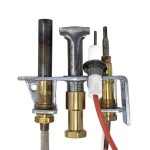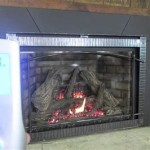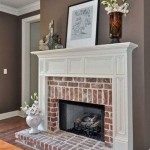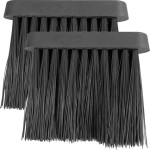Fireplace Pilot Light Went Out: A Comprehensive Guide to Troubleshooting and Restoration
A gas fireplace offers supplemental heat and aesthetic appeal, particularly during colder seasons. A key component of its functionality is the pilot light, a small, continuous flame that ignites the main burner when heat is required. When the pilot light goes out, the fireplace is rendered unusable, demanding troubleshooting and potentially, a solution. Understanding the common causes and possessing the knowledge to safely address the issue is crucial for maintaining a functional and safe gas fireplace.
The pilot light serves as a safety mechanism in addition to its ignition role. Thermocouples or thermopiles, safety devices connected to the gas valve, rely on the heat from the pilot flame to remain open, allowing gas to flow to the main burner. If the pilot light is extinguished, the thermocouple cools, shutting off the gas supply and preventing a potentially dangerous buildup of unburned gas. Thus, a persistent pilot light outage indicates not only a malfunction but also a safety concern that should be addressed promptly and carefully.
Understanding the Common Causes of a Pilot Light Outage
Several factors can contribute to a pilot light going out. Pinpointing the root cause is the first step toward resolving the issue. The most frequent culprits include a dirty pilot light assembly, a faulty thermocouple, a draft affecting the flame, or a gas supply problem. Each of these possibilities warrants a focused inspection to identify the source of the interruption.
A dirty pilot light assembly is a common cause, particularly if the fireplace hasn't been used for an extended period. Dust, debris, and spider webs can accumulate within the pilot light orifice, restricting the flow of gas and causing the flame to become weak, unstable, or even extinguish entirely. Regular cleaning and maintenance can prevent this issue. It is important to ensure the gas supply valve is completely shut off before doing any cleaning of the pilot light assembly.
The thermocouple, a heat-sensitive safety device, plays a crucial role in maintaining the pilot flame. Its function is to generate a small electrical current when heated by the pilot flame. This current keeps the gas valve open, allowing gas to flow to both the pilot light and the main burner when required. A faulty thermocouple may not generate sufficient current, causing the gas valve to close and extinguish the pilot light. The thermocouple's lifespan is finite, and it may need replacement over time. Visually inspecting the thermocouple for signs of damage, such as corrosion or kinks, is a necessary step in the troubleshooting process. A multimeter can be used to test the voltage of the thermocouple, confirming whether it is generating adequate current.
Drafts, created by open windows, doors, or even a poorly sealed chimney, can disrupt the pilot flame, causing it to flicker and eventually extinguish. The strength and direction of any prevailing drafts should be considered as a contributing factor. Addressing any drafts by closing nearby openings or improving the chimney seal can stabilize the pilot flame. In some cases, installing a wind guard can shield the pilot flame from external disturbances.
Gas supply problems are another potential cause of a pilot light outage. A closed or partially closed gas valve, a kink in the gas line, or a problem with the main gas supply to the house can all restrict the flow of gas to the fireplace, starving the pilot light of fuel. Inspecting the gas supply line for any obstructions or restrictions is a crucial step. Verifying that the gas valve is fully open is also essential. If there are suspicions about the main gas supply, contacting the gas company is necessary.
Furthermore, the gas regulator, a device that controls the gas pressure flowing to the fireplace, can malfunction, leading to insufficient gas pressure at the pilot light. A faulty gas regulator may require professional repair or replacement. Diagnosing a gas regulator issue typically requires specialized tools and knowledge, making it a task best left to a qualified technician.
Steps to Safely Relight a Fireplace Pilot Light
Before attempting to relight the pilot light, it's essential to prioritize safety. Ensure the gas supply to the fireplace is turned off for at least five minutes to allow any accumulated gas to dissipate. Also, verify that the area around the fireplace is well-ventilated. A carbon monoxide detector can provide an additional layer of safety during this process.
Locate the pilot light assembly, usually found near the bottom of the fireplace. Most gas fireplaces have clear instructions printed on or near the gas valve, outlining the relighting procedure. These instructions typically involve pressing and holding a control knob while simultaneously using a spark igniter or a match to ignite the pilot light. Holding the control knob down for a specified period, usually around 30 seconds, allows the thermocouple to heat up and generate enough current to keep the gas valve open.
If the pilot light fails to ignite after several attempts, there may be a more significant problem, such as a blocked pilot light orifice or a faulty igniter. Further troubleshooting or professional assistance may be required. Continuing to attempt relighting without addressing the underlying issue can be hazardous.
Once the pilot light is successfully relit, observe the flame for stability. A healthy pilot flame should be blue and steady, enveloping the thermocouple. A yellow or flickering flame indicates a potential issue, such as a dirty pilot light assembly or a gas supply problem. Addressing these issues promptly can prevent future pilot light outages.
If the pilot light consistently goes out shortly after being relit, the thermocouple is the most likely culprit. A failing thermocouple may not generate sufficient current to keep the gas valve open, causing the pilot light to extinguish. Replacing the thermocouple is a relatively straightforward repair that can often be done by a knowledgeable homeowner.
Preventative Maintenance to Minimize Pilot Light Problems
Regular maintenance is the best way to prevent pilot light outages and ensure the safe and efficient operation of the gas fireplace. Performing routine cleaning and inspections can identify potential problems before they escalate into major issues. The annual cleaning is crucial to keep all the components free of dust and debris.
Cleaning the pilot light assembly is a critical part of preventative maintenance. Using a small brush or a can of compressed air, carefully remove any dust, debris, or spider webs from the pilot light orifice. Avoid using any sharp objects that could damage the orifice. Regular cleaning can prevent blockages and ensure a strong, stable pilot flame.
Inspecting the thermocouple for any signs of damage, such as corrosion or kinks, is also important. If the thermocouple appears damaged, it should be replaced. Replacing a thermocouple is a relatively inexpensive and straightforward repair. It's a proactive approach in preventing future pilot light problems.
Checking the gas supply line for any obstructions or kinks can also help prevent pilot light outages. Ensuring that the gas valve is fully open and that there are no obstructions in the gas line will ensure a consistent supply of gas to the pilot light. If there are any concerns about the gas supply, contacting the gas company for assistance is recommended.
Scheduling a professional inspection and cleaning of the gas fireplace annually can also identify and address potential problems before they cause a pilot light outage. A qualified technician can inspect all components of the fireplace, including the pilot light assembly, thermocouple, gas valve, and gas regulator, ensuring they are functioning properly. They can also perform a thorough cleaning of the fireplace, removing any dust, debris, or soot. This preventative maintenance can help extend the lifespan of the fireplace and ensure its safe and efficient operation.
Addressing a pilot light outage requires a systematic approach, starting with understanding the common causes, followed by safe troubleshooting and relighting procedures, and concluding with preventative maintenance. By following these guidelines, one can maintain a functional and safe gas fireplace, enjoying its warmth and aesthetic appeal for years to come. When faced with a persistent or complex issue, it is essential to consult with a qualified technician to ensure a safe and effective resolution.

How To Relight A Millivolt Valve Gas Fireplace Pilot Light Tophat Pro

5 Reasons Gas Fireplaces Won T Light How To Fix It Fireplace Tips

How To Light The Pilot On A Gas Fireplace

How To Test If Your Pilot Flame Is Bad Www Mygasfireplacerepair Com

Should I Turn Off The Pilot Light In Spring B C Comfort Fireplace Hvac Repair Installation

Gas Fireplace Won T Stay Lit Magic Touch Mechanical

Mystery Exposed The Unexpected Culprits Behind Extinguished Pilot Lights Logan A C And Heat Services

How Can I Re Ignite My Pilot Light We Love Fire

Gas Fireplace Pilot Lights Your Complete Guide Universe

5 Reasons Gas Fireplaces Won T Light How To Fix It Fireplace Tips
Related Posts








